My Perfect Music Box as Instrument
I composed 100+ songs via the Muro Box App!
Yen-Ting Chen (Tim)
My Perfect Music Box as Instrument
I composed 100+ songs via the Muro Box App!
Yen-Ting Chen (Tim)
Why Did the Muro Box Team Want to Invite Yen-Ting to Share His Story?
Yen-Ting is the creator of the Muro Box App who has publicly shared the most well-known tracks, which is why he was featured in this special interview.
As of September 25, 2025, he has shared 134 songs (105 for the N20 version and 34 for the N40 version), including tracks in Chinese, English, Japanese, and Korean. His repertoire spans movie and anime theme songs, TV dramas and musicals, as well as classic Mandarin and English hits, alongside trending online favorites popular with younger listeners.
Yen-Ting often responds to fans’ song requests in the comments section of his tracks on the app. If he personally enjoys the song and feels a connection with its melody, he is happy to take the time to arrange it!
“I’m not a musician, but I have ears” — My Muro Box User Story
Hello to all music box enthusiasts! I’m Yen-Ting, and as of September 2025, I’ve been using the Muro Box music box for 3.5 years. Over the years, I’ve enjoyed composing and uploading tunes for others to play, and sharing my thoughts about those songs in the user community. Though I’m not the most experienced user, I’m definitely a dedicated one, and I’m truly honored to have received an invitation from the Muro Box Team to answer a series of questions and share my personal journey and reflections with this wonderful instrument.
I’m not a music major, but I like music for sure. Before my encounter with the music box, like many kids in Taiwan, we took musical instruments as a hobby. Some may take it as a class to fill the after-school time, but I did enjoy that pretty much. First at a children’s percussion band, I had a wonderful kindergarten time, and then I practiced piano for several years but never took it seriously. Guitar was a cool gadget at high school, and I finally found it easier at the choir. Music was never absent, but neither played a major role. Having nothing to perform, I would describe myself as a latent musician.
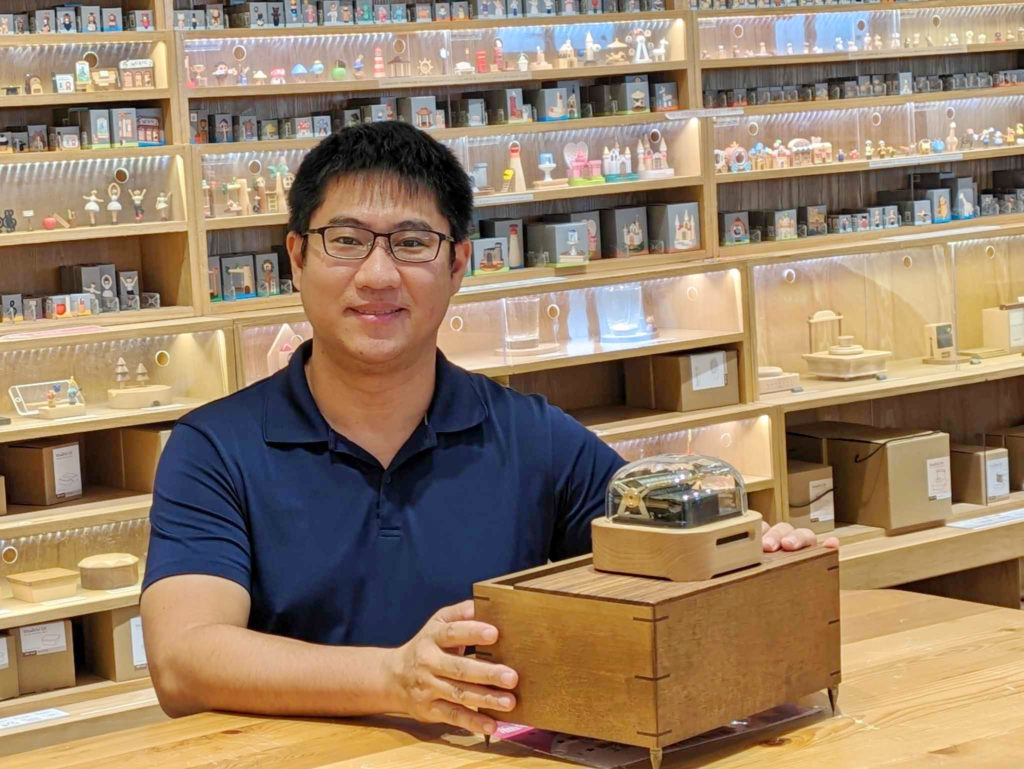
Because I have relative pitch in my ear,
Muro Box is the perfect musical instrument for me.
Thank God I still have good ears and a good sense of hearing——or perhaps not as good as I thought. I have relative pitch with a movable “Do”, allowing me to comprehend melody in an easier way but the paragraphs would sound the same to me even if the tone had been shifted. Another major drawback is that I won’t be able to identify the note I hear, nor to communicate precisely. In this setting, music stays in my head and has difficulty expressing itself.
Note 1: Perfect pitch is the ability to identify and reproduce specific musical pitches, while relative pitch is the ability to distinguish between different musical pitches.
Note 2: Solfege (movable-do) naming convention: Singing the tonic note of the current key as “Do”. The corresponding convention is “fixed-do”: Using absolute pitch to sing all notes.
Using the song “Sunny Day” by Jay Chou as an Example:


Fortunately, I don’t make a living on music. The “defect” in the way I comprehend music does not affect my life as life goes on. Then I settled in central Taiwan, found a job in the middle of the farms and started strolling around. Soon enough I found the Taiwan Modern Music Boxes Museum and discovered Muro Box in the gift shop. This can be recognized as my first encounter with this delicate little boutique.
As you all know——and maybe know better than I do——this app-controlled mechanical music box is capable of a lot of things, but it is also born with limits. The comb and the mechanical speed limit basically marked the border of its performance. No semitones, no continuous notes faster than 20 bpm, and most important of all, songs compatible with the Muro Box have to fit within the range and have to be converted to C Major.


C Major….Wait did I just hear C Major? You can say that again! After all those 35 years I finally found exactly what I am looking for. Although I don’t have what it takes to play an instrument promptly and precisely, I can however polish my arrangement over and over again then leave it to Muro Box to play it out. Best of all, I can have my work debut till I’m satisfied, no rush, no pressure because it’s my stage, my pace!
I found my own way of composing music after arranging a lot of famous songs.
I seldom compose my own pieces; instead, I arrange songs that already exist, mostly famous ones and classics ones. What I do is to recognize the melody, and process what I hear with what’s wired in my ear: comprehending them in C Major. Then it turns out to be a natural adaptor for Muro Box. Most songs need trimming, selection and sometimes style adaptation to fit in Muro Box. They may appear quite differently after modification, so I guess they may somehow count as “my composition”?!
The range of song selection is, um…. wide, I guess. Mandarin and Taiwanese pop, folklore, ballade, Western pop mostly English, movie scores, animation aka. J-pop, K-pop, and sometimes classical. There’s a category that may be a bit interesting to you, that’s my “Etudes”. They are not classical ones but some TV commercial’s melody, shore’s chimes and some catching clips inspired from radio. Hilarious they may seem to be, it’s actually great fun when arranging them.
I’d like to hereby share about my routines for checking whether a song can be converted to Muro Box or not.
1. Convert the melody to C key and check if there are many unavoidable semitones.
2. Does the converted melody fit within the N20 comb?
3. Are there repetitive notes that come in intervals too short?
4. Are there any sentences solely rhythmic without tones?
5. Do I have enough passion and faith in arranging this song?
Cultivate composing energy with my ears and let time settle the inspiration for new creation.
There are of course exceptions, but in most cases, there’s always a solution. It takes time and trial once and once again, but the effort will remain and each time it gets closer to completion.
On the other hand, when it comes to playing the music box as a hobby, it’s also important to find an efficient method to increase output. When starting to play the music box, it’s natural to begin with the most favorite and familiar tunes. However, after completing these initial pieces, I occasionally find a situation: I want to play a tune, but don’t know which song to arrange. What happens more commonly is that I heard a tune I could play a few days ago, but now I can’t recall which song it is.
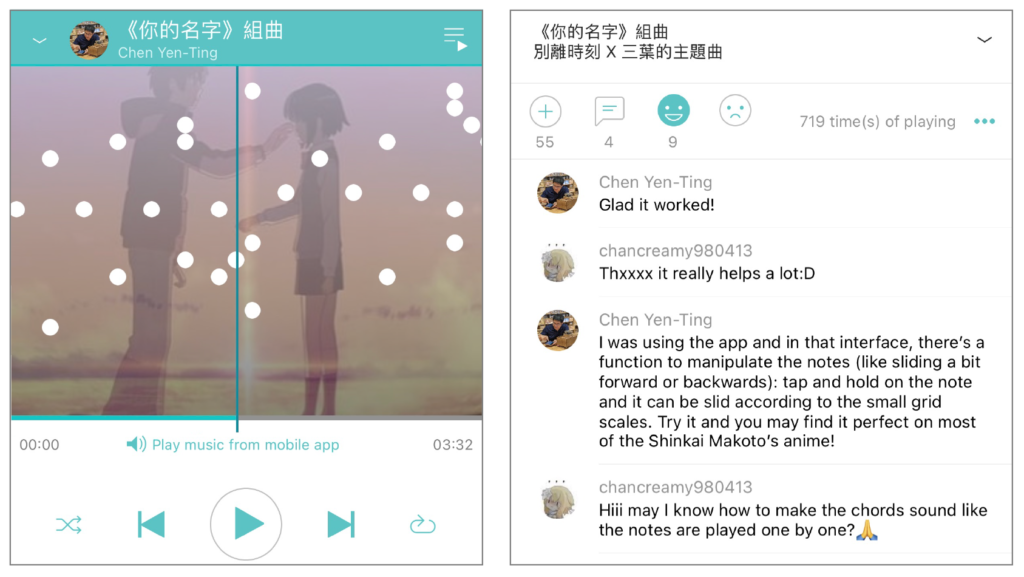

Therefore, I added a “Music Box” playlist to my KKBOX music streaming app. I usually add songs that I think can be played on the music box to this folder. Whenever a song comes to mind, I add it to this playlist. During my commute time for work, I listen to this playlist. Once I feel familiar with a particular song and it starts to resonate with me, I can start working on its Muro Box version via the Muro Box App. Listening to a song extensively before playing and transcribing it is quite helpful. Moreover, during the process of transcribing, I often find the need to pause and listen to the original track for reference.
From time to time, the compositions come to a halt, and it feels like being trapped. That’s perhaps one common thing every one of us experienced on our way of composing music box works. These works may be buried deeply but oftentimes after a while they make sense again when I review them, just like the Muse comes to me all at a sudden; to be practical on the other hand, it’s likely to attribute to some hearing sedimentation.
Thus, in conclusion, it’s the hearing that matters the most, at least it works that way to me.
From Selecting a Song to Arranging and Sharing it with Other Users, I Love Each Step of the Music Creation Process in the Muro Box App!
One of my favorite parts of composing is to debut a song. As you can see now on the app, the interface has become compact and pretty. The sound texture of the simulated music box ding-dong has also improved a lot so it’s quite an enjoyment to hear my works on the app. It’s also challenging to introduce the works in the user group, as it’s an official review of the content, but it’s worth it since it triggers more opinions from other users.


Arranging Muro Box Melodies Has Become a Fun Part of My Family Time
Arranging music to play on the Muro Box has become a decent way to “properly use” my trivial times. It has become a birthday song special for my family, and kids look forward to my next work. I sometimes take orders from them (challenge accepted!) and most of the time they are satisfied. As to my wife, a piano major, that’s…. not so easily persuaded, but she indeed gave me lots of technical support and has been a reliable consultant. Lucky me!
My wife, who’s a music teacher, occasionally helps me understand the original compositions and break down the more complex sections, especially when I run into challenges while arranging. Our eldest child is ten years old now—maybe in a year or two, once she starts using a smartphone, I’ll share this joy with her too. My wife has requested a few songs for me to arrange, though I haven’t fulfilled every one of them; I only take on pieces that I genuinely enjoy.
Why Did I Decide to Purchase an Additional N40 Music Box?
My biggest—and only—expectation for the N40 was that it would allow me to start arranging songs that I simply couldn’t realize on the N20. The N40 has fully met this expectation. With the addition of black keys, I can play semitone intervals that were impossible on the N20, without having to transpose every song to C major, and I can even incorporate key changes within the same piece. For these reasons, I had no hesitation in upgrading to the N40.

Yen-Ting commented under his track on the app: “I’ve devoted all my creative energy in 2024 to this!
My Considerations When Purchasing the N40 Music Box
The feature I cared about the most was the expanded range, but there were two other aspects I valued just as much: “Does the limit for consecutive notes still stay at 120 BPM?” and “Have consecutive notes become more stable?” I focused on these because this characteristic determines whether certain songs can even be arranged. In other words, I was more concerned with how far the N40 could take us, rather than how beautifully it could perform tasks that were already possible.
First Impressions of Unboxing the N40 Music Box
After such a long wait, my first impression of unboxing the N40 was, “This is ASMR for storage enthusiasts.” The product fits perfectly within the packaging, cushioned just right, so that when I pulled it out, there was even a slight airtight resistance. In this day and age, it’s rare for a company to invest in such thoughtful packaging, and as a consumer, I truly appreciate it.
Moreover, when I saw that the eight corners of the cardboard box were covered with protective plastic caps, I felt completely reassured, knowing that the resonance box inside was well-protected!
(*Note: ASMR stands for “Autonomous Sensory Meridian Response”.)

The exclusive resonance box for the Muro Box N40 is designed to store the complete music box unit along with all accessories. Its thoughtful design provides strong impact protection while minimizing package size.

The exclusive resonance box for the Muro Box N40 is designed to store the complete music box unit along with all accessories. Its thoughtful design provides strong impact protection while minimizing package size.
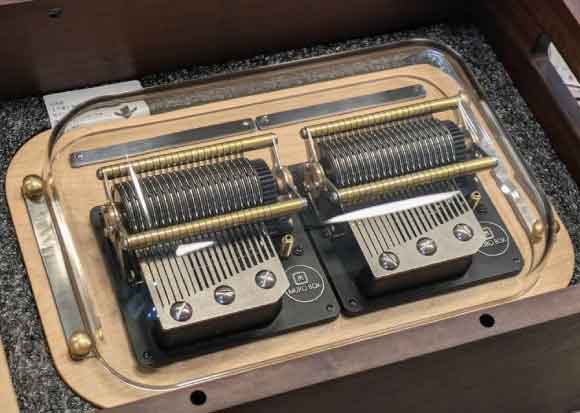
The exclusive resonance box for the Muro Box N40 is designed to store the complete music box unit along with all accessories. Its thoughtful design provides strong impact protection while minimizing package size.
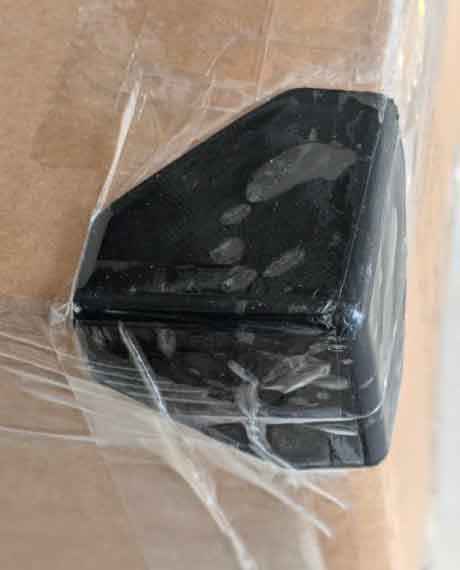
The exclusive resonance box for the Muro Box N40 is designed to store the complete music box unit along with all accessories. Its thoughtful design provides strong impact protection while minimizing package size.

Comparing the Performance and Feel of the N20 and N40 Music Boxes
I feel that moving from the N20 to the N40 isn’t just an upgrade in sound quality or resonance—it’s a step into a completely different direction. Perhaps because of the heavier metal base, it’s like the difference between a small bell and a large bell: the small bell (N20) sounds crisp but lacks resonance, while the large bell (N40) is deep and full but not as bright.
As for resonance, the difference I notice is a bit abstract, but the same note on the N40—regardless of the version—always sounds a little “farther away” compared to the N20.
How It Sounds with the Resonance Box
I usually play my music box on top of the resonance box. With the box amplifying the sound, the same note seems to sustain its resonance a bit longer. In a very quiet environment, you can notice the lingering tail of the notes, but in a noisier setting, the effect might feel “lost.”
Regarding the material difference, in my experience, the harder acacia wood sustains resonance longer than zebrawood. This characteristic allows the bass notes to hold rather than just being short, distinct points. The downside is that if the music is densely played, the prolonged resonance can make the notes blur together—this effect is more noticeable in the lower register. So, if I want to listen to pieces with many low notes, I usually remove the resonance box.
Although I have both the N20 and N40 music boxes at home, I don’t often sit down to listen to them. The times I do fully enjoy the music boxes are usually late at night, after finally coming home and once my wife and child are asleep. I’ll close the study door and listen to a newly arranged piece to hear how it plays on the music box.
The Muro Box team thoughtfully designed the app to allow customers with two music boxes at home to switch which one is being controlled. I only recently discovered this feature myself—check out this blog post to learn how to switch between them. 🙂
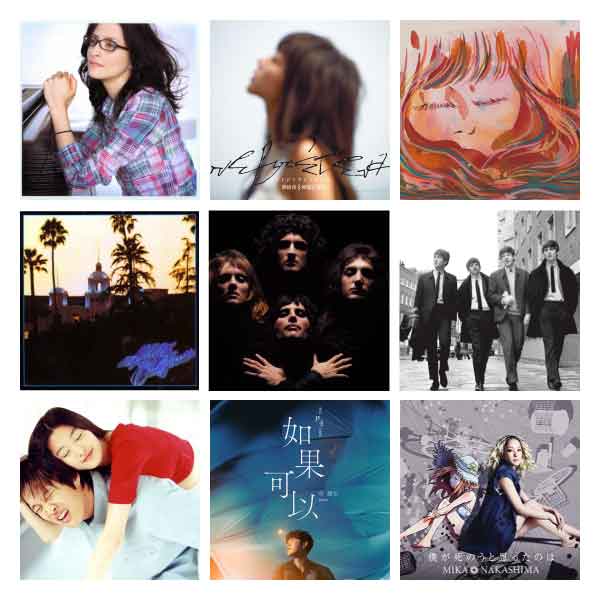
Come Listen to My Arrangements on the Muro Box App
Click on the song titles below to open a new webpage and listen to my arrangements on the Muro Box App—pretty cool, right?
Chinese Songs:
• Cheer Chen – The Meaning of Travel (arranged for 40-note version)
• Wei Li-An – If I Could (arranged for 40-note version)
• Accusefive – Love in Summer (arranged for 40-note version)
English Songs:
• Eagles – Hotel California (40-note arrangement)
• Queen – Bohemian Rhapsody (40-note arrangement)
• The Beatles – Yesterday (40-note arrangement)
Japanese Songs:
• Hikaru Utada – First Love (20-note arrangement)
• A Cruel Angel’s Thesis (20-note arrangement)
• Tegami ~Haikei Juugo no Kimi e~ (40-note arrangement)
• Mika Nakashima – I Once Thought of Ending It All (40-note arrangement)
Korean Songs:
My Sassy Girl Theme: I Believe (40-note arrangement)
Muro Box In Youtube

10:03

10:03

10:03

10:03

10:03
First Love (早期創作的驚喜)
我應該是從2022年開始接觸MuroBox的,那時的平台環境跟現在不太一樣,如果是在2023年以後才加入MuroBox的朋友,面對現在百花齊放、週更日更的曲庫,可能不太容易想像以前的曲庫長什麼樣子:新曲目出現的速度幾乎是用月在算的,然後一個編曲者只要能累積超過十首以上的好作品,就有機會霸佔熱門榜單全頁面!那真是個土壤還沒這麼肥沃的階段,而當時的官方曲目也比較保守一點,除了客製接單的編曲比較會出現流行歌、非傳統音樂盒常見曲目之外,比較有水準的作品通常都是那些你會在音樂盒店鋪聽到的既有曲目。
我剛開始接觸MuroBox時也是很保守的,不太敢編很跨界的曲子,但不久後就開始不安分了,想要利用程式控制音樂盒的特性,來製造一些原本不太可能出現在音樂盒上的東西,於是選曲的方向開始轉往「不太像音樂盒」的曲子,反正只要打得好就會變成「居然可以打成音樂盒」的曲子。經過了幾首流行歌曲的嘗試之後,決定選一首經典但從來沒有在音樂盒上出現過的流行歌:宇多田光First Love。
差不多是這個時候學會了在APP編曲介面中「微挪一小格」音符的功能,所以開始可以做出刷和弦的效果了,也是這首歌的前奏能夠複刻出原曲風味的關鍵技術突破。這首歌從小聽到大,從來不會覺得退流行,很耐聽,雖然N20無法讓我實現升key的編曲,但是稍微trim過一下,作為音樂盒作品反而剛剛好,連我自己聽了都覺得很滿意。這也是我第一首Hit,播放次數跟收藏次數都不錯,但很奇怪的是都沒有留言(笑),希望如果有同好對這首歌有什麼想法,都可以讓我知道!
從上次First Love打出了連自己都喜歡的作品之後,沉澱了一小段時間,還是要繼續追求成長與突破。此時期,曲庫內的作品幾乎都是慢歌為主,興許是因為配合機械構造的限制,所以選慢歌是合理且安全的做法。但我總有個想法,覺得要讓音樂盒的曲子也能展現出速度感,所以終究還是挑了一首快歌,而在這不久前我跟太太打太鼓達人,對新世紀福音戰士片頭曲《殘酷天使的行動綱領》感到印象最深刻,於是我就不出意外的選了這首,現在想起來還是覺得不可思議居然可以打成音樂盒的曲子。
首先要避開太多連續音,而這首曲子原本的旋律就可以達成,不需要多做改編,移調到C大調也沒遇到什麼問題,都在音域範圍內,所以主旋律就搞定了;然後是左手的部分,根音、節奏架出來,而這方面恰好得力於太鼓達人,因為只要模仿鼓點的譜面,再用耳朵去校正,就能抓到關鍵的拍點!這首編曲如果跟我之後的作品比較,當然是顯得生疏,但聽過原曲的人一定會知道敲出來的音符對應到什麼東西!這就是還原度的重要性,而我也是在這首歌上初次感到,需要重複聽過十幾遍、幾十遍,不斷把音符與節奏修正到自己聽起來也是舒服的,才能成為滿意上架的作品。
從上次First Love打出了連自己都喜歡的作品之後,沉澱了一小段時間,還是要繼續追求成長與突破。此時期,曲庫內的作品幾乎都是慢歌為主,興許是因為配合機械構造的限制,所以選慢歌是合理且安全的做法。但我總有個想法,覺得要讓音樂盒的曲子也能展現出速度感,所以終究還是挑了一首快歌,而在這不久前我跟太太打太鼓達人,對新世紀福音戰士片頭曲《殘酷天使的行動綱領》感到印象最深刻,於是我就不出意外的選了這首,現在想起來還是覺得不可思議居然可以打成音樂盒的曲子。
首先要避開太多連續音,而這首曲子原本的旋律就可以達成,不需要多做改編,移調到C大調也沒遇到什麼問題,都在音域範圍內,所以主旋律就搞定了;然後是左手的部分,根音、節奏架出來,而這方面恰好得力於太鼓達人,因為只要模仿鼓點的譜面,再用耳朵去校正,就能抓到關鍵的拍點!這首編曲如果跟我之後的作品比較,當然是顯得生疏,但聽過原曲的人一定會知道敲出來的音符對應到什麼東西!這就是還原度的重要性,而我也是在這首歌上初次感到,需要重複聽過十幾遍、幾十遍,不斷把音符與節奏修正到自己聽起來也是舒服的,才能成為滿意上架的作品。
從上次First Love打出了連自己都喜歡的作品之後,沉澱了一小段時間,還是要繼續追求成長與突破。此時期,曲庫內的作品幾乎都是慢歌為主,興許是因為配合機械構造的限制,所以選慢歌是合理且安全的做法。但我總有個想法,覺得要讓音樂盒的曲子也能展現出速度感,所以終究還是挑了一首快歌,而在這不久前我跟太太打太鼓達人,對新世紀福音戰士片頭曲《殘酷天使的行動綱領》感到印象最深刻,於是我就不出意外的選了這首,現在想起來還是覺得不可思議居然可以打成音樂盒的曲子。
首先要避開太多連續音,而這首曲子原本的旋律就可以達成,不需要多做改編,移調到C大調也沒遇到什麼問題,都在音域範圍內,所以主旋律就搞定了;然後是左手的部分,根音、節奏架出來,而這方面恰好得力於太鼓達人,因為只要模仿鼓點的譜面,再用耳朵去校正,就能抓到關鍵的拍點!這首編曲如果跟我之後的作品比較,當然是顯得生疏,但聽過原曲的人一定會知道敲出來的音符對應到什麼東西!這就是還原度的重要性,而我也是在這首歌上初次感到,需要重複聽過十幾遍、幾十遍,不斷把音符與節奏修正到自己聽起來也是舒服的,才能成為滿意上架的作品。
從上次First Love打出了連自己都喜歡的作品之後,沉澱了一小段時間,還是要繼續追求成長與突破。此時期,曲庫內的作品幾乎都是慢歌為主,興許是因為配合機械構造的限制,所以選慢歌是合理且安全的做法。但我總有個想法,覺得要讓音樂盒的曲子也能展現出速度感,所以終究還是挑了一首快歌,而在這不久前我跟太太打太鼓達人,對新世紀福音戰士片頭曲《殘酷天使的行動綱領》感到印象最深刻,於是我就不出意外的選了這首,現在想起來還是覺得不可思議居然可以打成音樂盒的曲子。
首先要避開太多連續音,而這首曲子原本的旋律就可以達成,不需要多做改編,移調到C大調也沒遇到什麼問題,都在音域範圍內,所以主旋律就搞定了;然後是左手的部分,根音、節奏架出來,而這方面恰好得力於太鼓達人,因為只要模仿鼓點的譜面,再用耳朵去校正,就能抓到關鍵的拍點!這首編曲如果跟我之後的作品比較,當然是顯得生疏,但聽過原曲的人一定會知道敲出來的音符對應到什麼東西!這就是還原度的重要性,而我也是在這首歌上初次感到,需要重複聽過十幾遍、幾十遍,不斷把音符與節奏修正到自己聽起來也是舒服的,才能成為滿意上架的作品。
Product Stability and After-Sales Support
Perhaps due to the mature mechanical design, both the N20 and N40 music boxes are very stable and durable. The customer service is excellent, and since the company is based in Taiwan, communication is completely smooth. The only issue I’ve encountered is that the app occasionally crashes on the iPad mini, so it’s a good habit to save your compositions frequently. Other than that, I haven’t run into any problems that couldn’t be resolved.
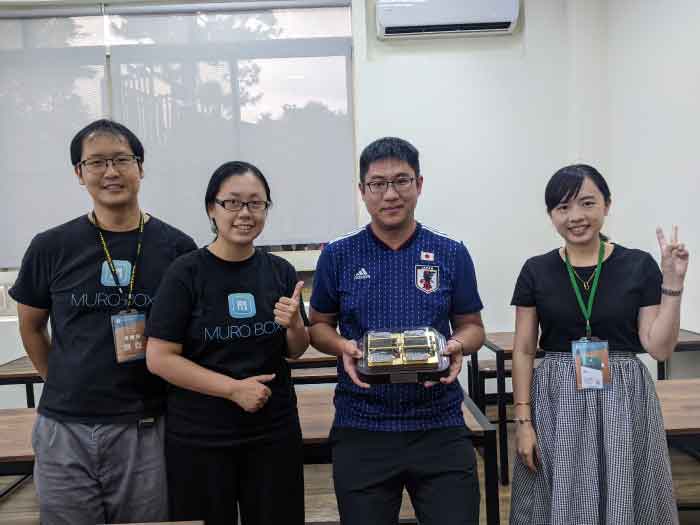
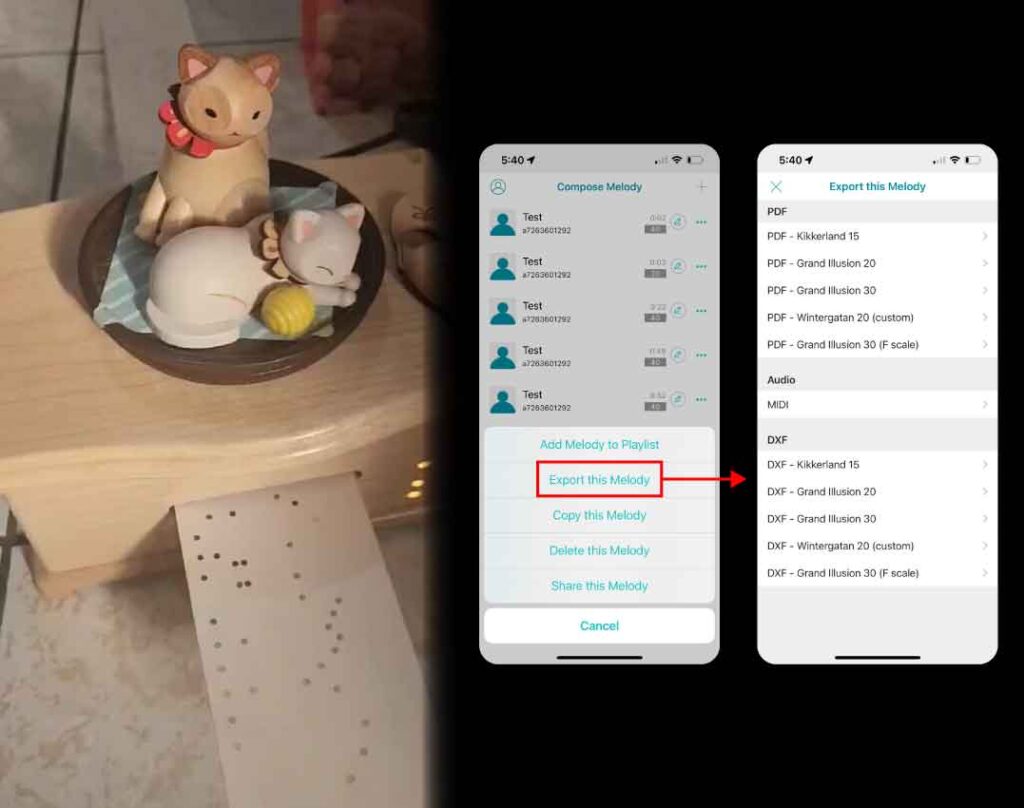
My Suggestions for Continued App Improvements
I hope that in the future, the app interface can be optimized for larger tablets. Currently, the app is designed for iPhone screen sizes, and on iPads it simply scales up the interface. This feels like a missed opportunity, because it doesn’t take full advantage of the larger screen. With a properly optimized layout, more measures could be displayed horizontally, and the 40-note range could be viewed vertically without constant scrolling. This would allow me to see entire note groups at a glance, which is very helpful for maintaining balance while arranging music.
I also hope that one day a “Export Sheet Music as PDF” feature will be available. This would let us print out our arrangements as actual paper rolls, which could even be used on vintage music boxes!
(*Note: This new feature has been developed and released in response to customer requests! Check out this post for instructions on how to use it.)
Why I Love Arranging Music but Didn’t Become a Professional Musician
I want to share some thoughts on why I didn’t become a professional musician. Many people in Taiwan learn music, but few continue to perform seriously. Learning music isn’t necessarily hard, but mastering it requires immense time, patience, and repetitive practice. Often, parents treat music as a hobby, a way to cultivate interest, or simply as a résumé booster. Even if a child shows talent and dedication, parents may discourage too much practice, wanting it to remain just a fun “extra,” not a career.
In Taiwan, most music studies end either because the family wants the child to stop or the student doesn’t want to endure the learning curve. For me, both applied: when I told my father that I didn’t want to practice piano anymore when I was in junior high school, we both felt relieved.

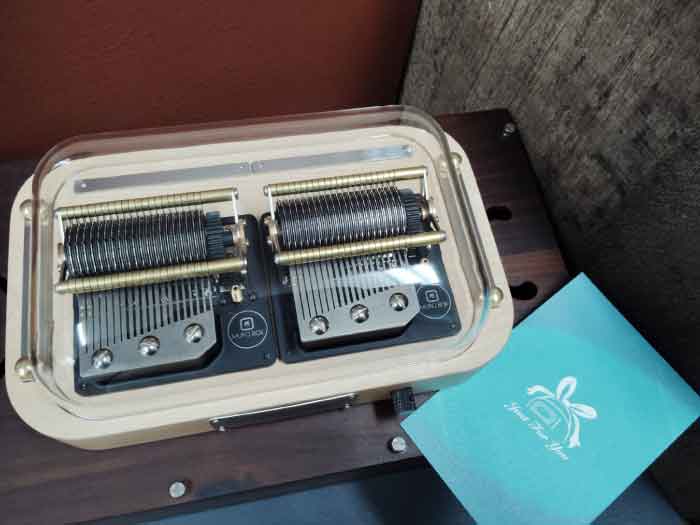
It’s Not That I Lack Musical Talent, I Just Didn’t Have Enough Time to Practice
Although I never completely stopped engaging with music, I would switch instruments and quickly get the hang of them without ever practicing to mastery. Achieving the level where you can perform freely requires continuous, dedicated practice. I had the ears, pitch, perhaps some harmony sense, and slightly above-average musicality, but I never honed them to their full potential. Choir was probably the best fit for my natural abilities, and I sang for several years, but once I entered medical school, I truly stopped all formal music activities. Along the way, I often heard people advise, “It’s just a hobby—don’t spend so much time on it,” reflecting the responsibility-first mindset we grew up with.
Music practice requires consistency. Four separate thirty-minute sessions are not equivalent to a continuous two-hour session, and practicing two hours every day is not the same as once a week for half a day. Those who pick up an instrument years later and play effortlessly usually practiced enough in their youth. I never built that foundation during the time I could, and by the time I had another chance, my body and mind couldn’t keep up. That’s why I rarely talk about the instruments I once learned—until the advent of automated music boxes.
Creative Freedom in Small Moments: How Automated Music Boxes Give a Latent Musician a Stage
An automated music box lets you compose and have it perform your arrangements. The beauty of composing is that you can work in small, private moments—whether in the bathroom, on your bed, or during a shift—refining each note with your ear until the piece sounds just right. While music theory knowledge helps, composing can be done one note at a time, gradually building a full piece. Unlike live performance, which demands perfection in the moment, this approach is perfect for those with only fragmented moments to practice.


I used to think my relationship with music would be limited to listening to CDs or singing at karaoke—a “that’s just how it is” mindset. It wasn’t so much acceptance as it was knowing not to chase unrealistic brilliance.
But the arrival of Muro Box changed that. Even my small abilities became usable and could accumulate, little by little. I don’t need to be an active musician to steadily build my creative output, and today I’ve compiled an entire playlist. I wouldn’t call myself a master, but I feel genuinely satisfied.
If someone finds my progress impressive, it’s simply because I’ve spent time playing the songs I love, without concern for achievement. Everyone accumulates at their own pace, but the compositions you save never betray you—you can always push them a little further. I hope anyone interested in “leaving their creative mark” can use this platform to build something meaningful too!
My Comment about the Muro Box
It’s hard to tell how happy I am to have encountered such a nice, delicate and technically stunning machinery boutique. It’s both relaxing and challenging, quite a contentment seeing my works being produced one after another one, and it gave those in-mind music a chance to be realized. Sincerely wish this magical Muro Box can be introduced to more people, see you at my next song!
